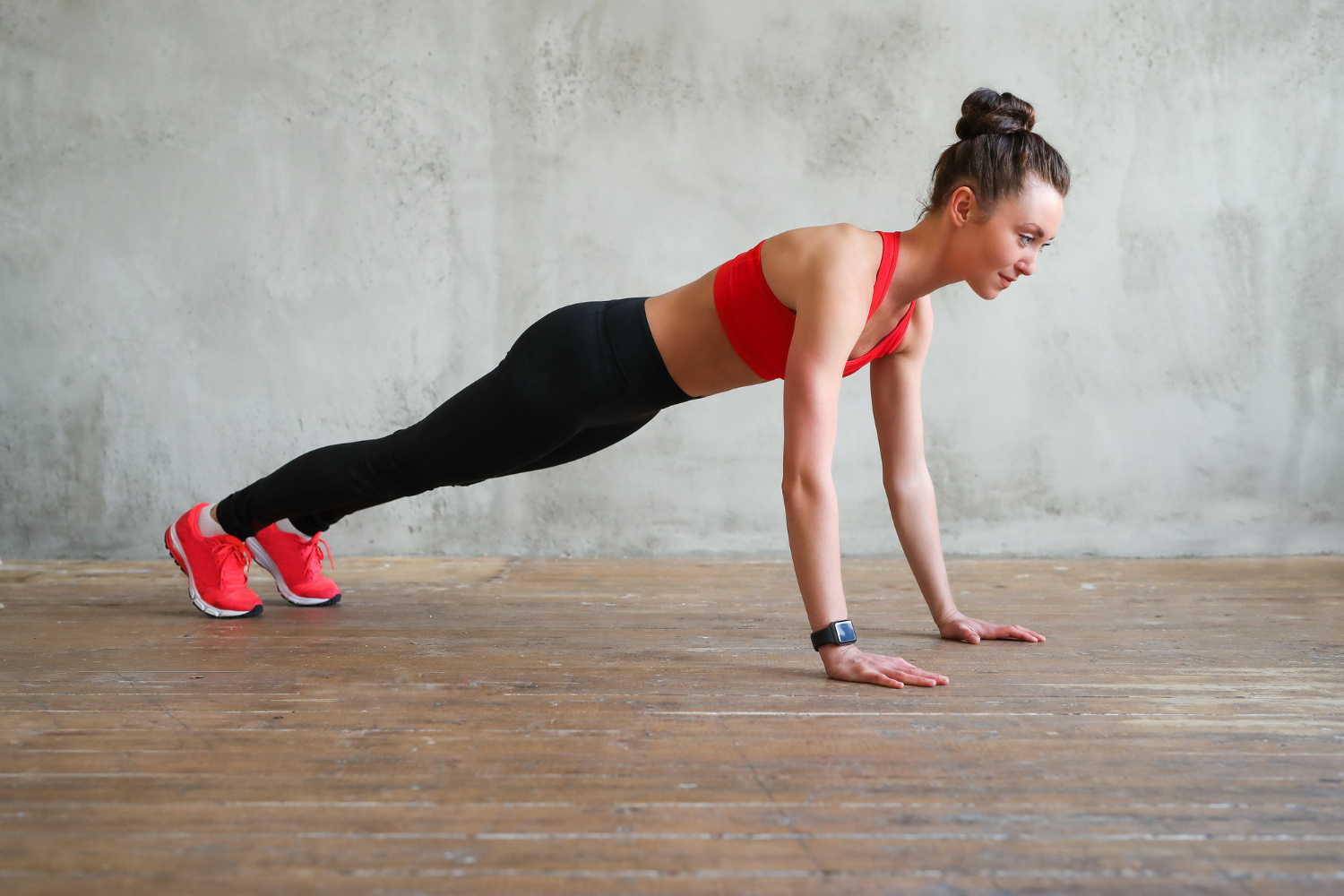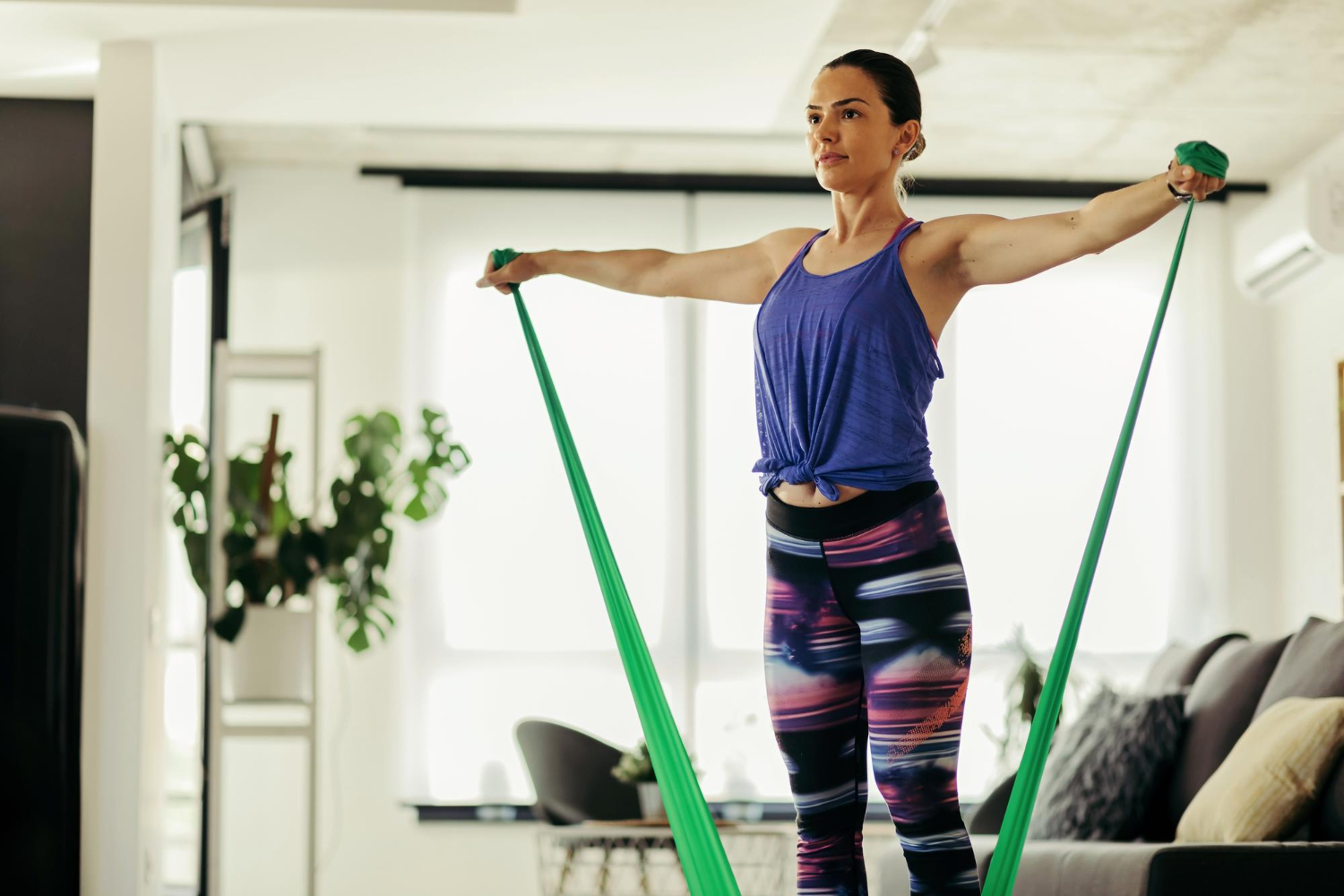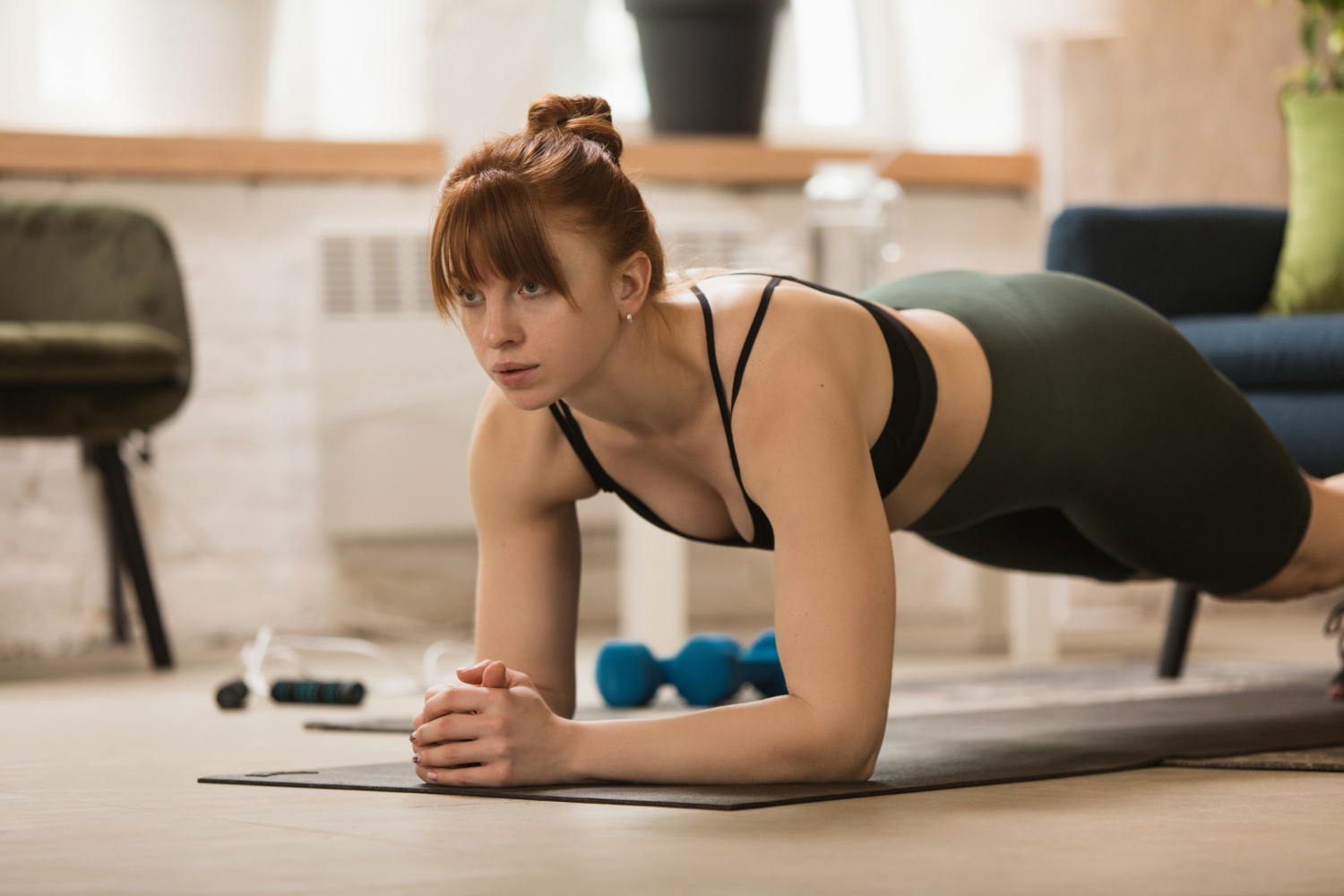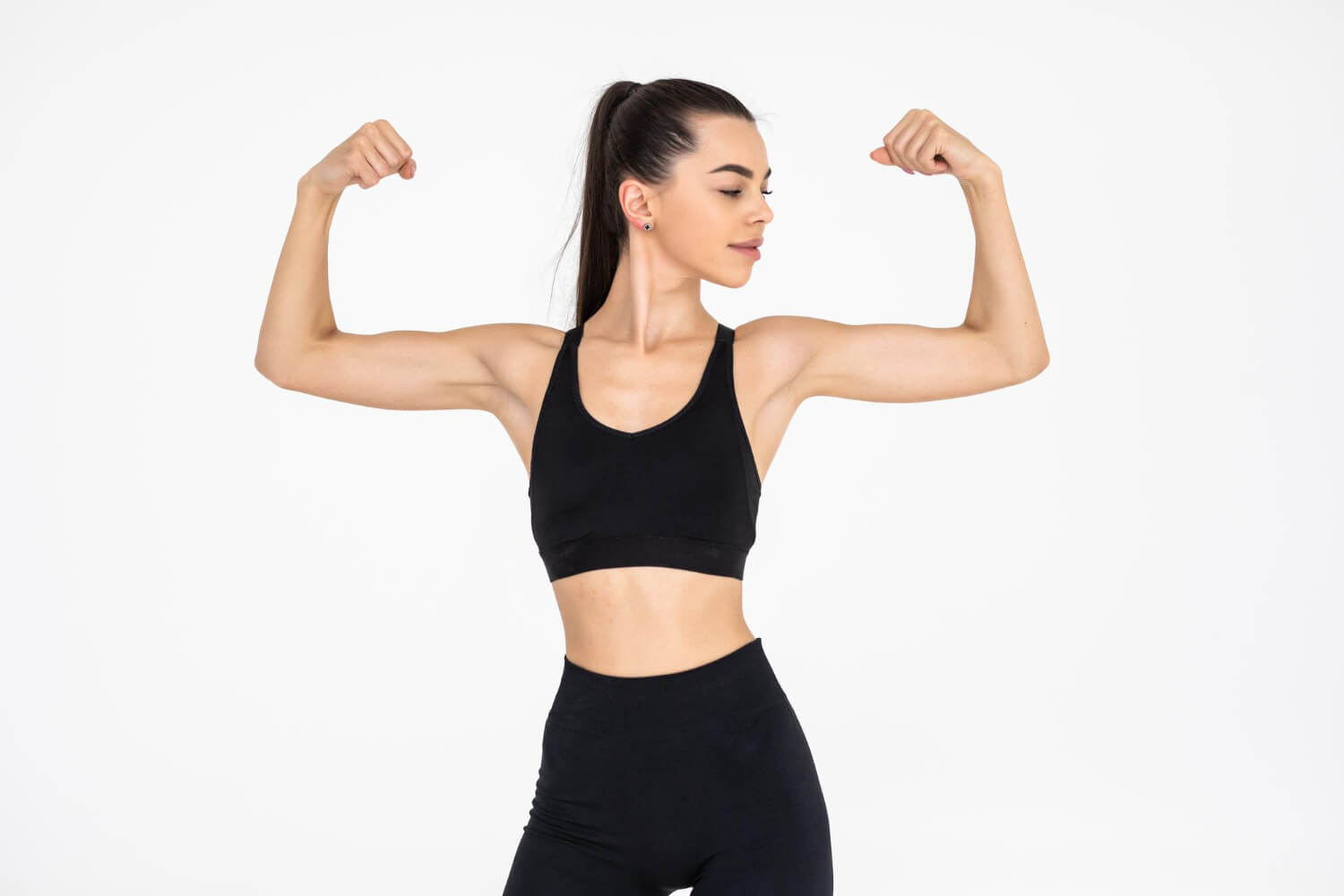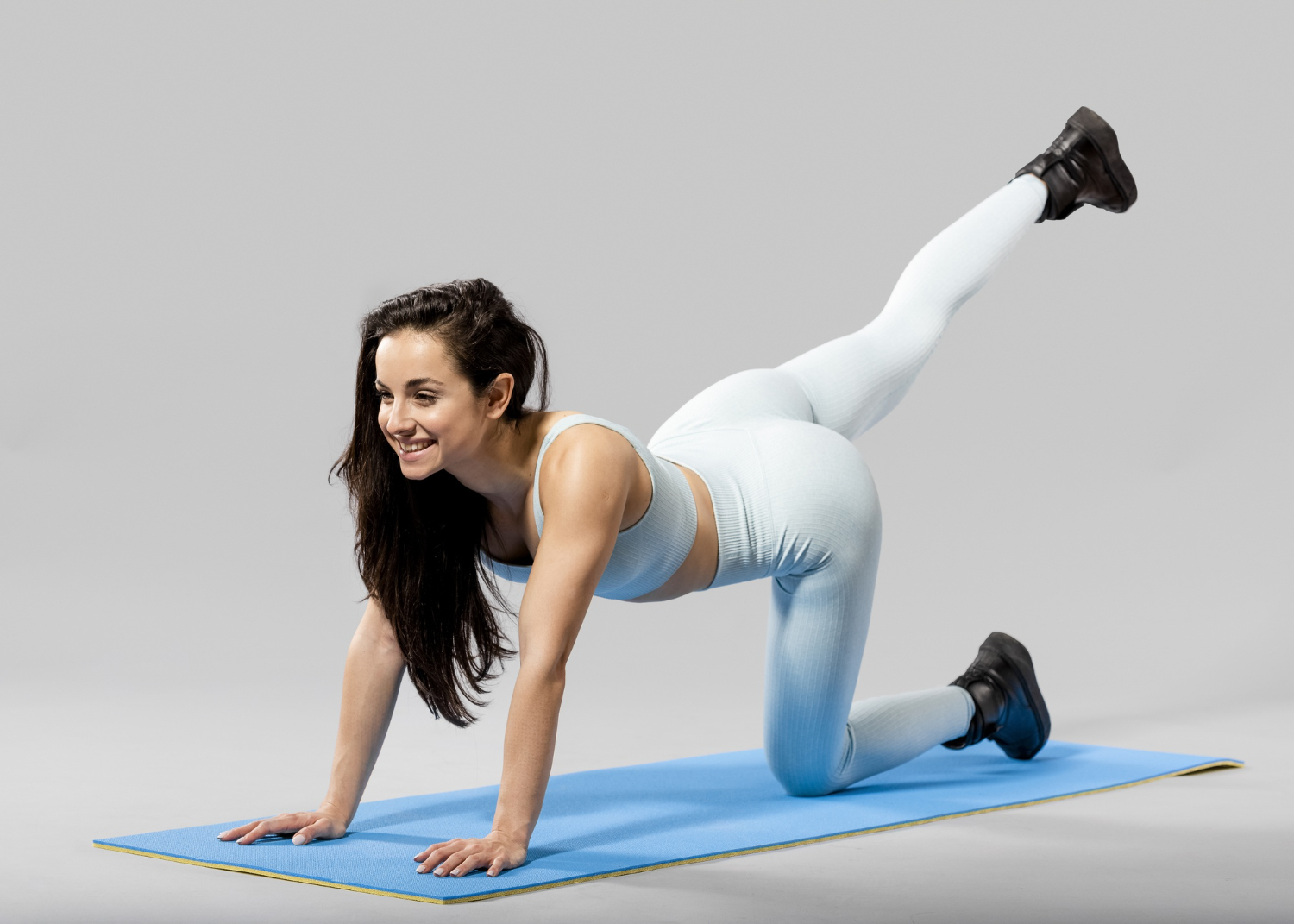7 Best Quad Workouts For Women: According To Fitness Trainer
Hello Ladies, let’s talk about quads! Many women worry about this part of their legs. Whether it’s about getting stronger, more sculpted, or just feeling more confident in shorts, the quads play a big role. If you’ve ever wondered how to target this muscle group effectively, you’re in the right place.
As a fitness coach, I’ve seen many women struggle with quad workouts. Some find it tough to feel the burn in the right spots. Others worry about bulking up too much. The key is finding the right exercises and doing them correctly. This way, you build strength and shape without adding bulk you don’t want.
In this article, I’ll share the 7 best quad workouts to help you achieve your goals. These moves are handpicked to target your quads, ensuring you get a great workout every time.
I’ll also give you tips on how to prepare for these exercises, making sure you get the most out of each session. Let’s dive in and get those quads working!
Benefits Of Quad Exercises For Women:
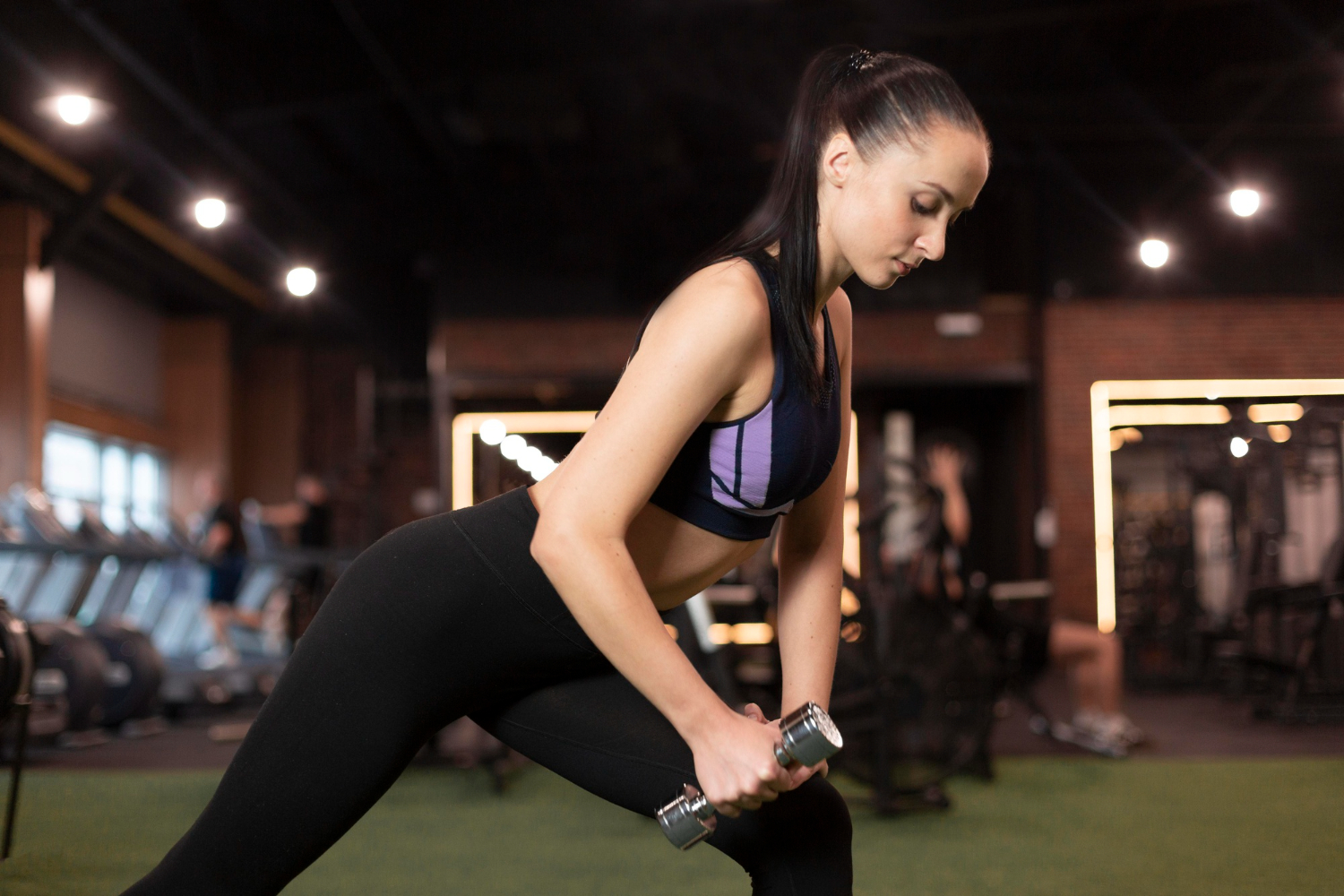
Alright, now let’s talk about why working those quads is so important. Strengthening your quads isn’t just about looks – though toned legs are a nice bonus! Here are some key benefits of quad exercises:
Increase Leg Strength:
Strong quads make everyday activities easier. Walking, climbing stairs, and even carrying groceries become less of a chore. Plus, stronger legs mean better overall fitness.
Shore Up Leg and Knee Stability:
Your quads play a big role in stabilizing your knees. By strengthening them, you help protect your knees from strain and injury. This is especially important if you’re into running or other high-impact sports.
Decrease the Risk of Knee Injury:
When your quads are strong, they support and protect your knee joints. This can help prevent common knee injuries, which is a big win for your long-term mobility and health.
Improve Your Body Composition:
Quad exercises burn calories and build muscle. This combo helps you shed fat and sculpt lean, toned legs. It’s a great way to improve your overall body composition and feel more confident.
Support Training Variety:
Adding quad-focused workouts to your routine keeps things interesting. It challenges your muscles in new ways and prevents workout boredom. Plus, it ensures you’re hitting all major muscle groups for balanced strength and fitness.
So, there you have it! Working your quads offers a ton of benefits, from boosting strength to enhancing knee health. Ready to see these benefits in action? Let’s get to those exercises!
How Often Should You Work the Quads?
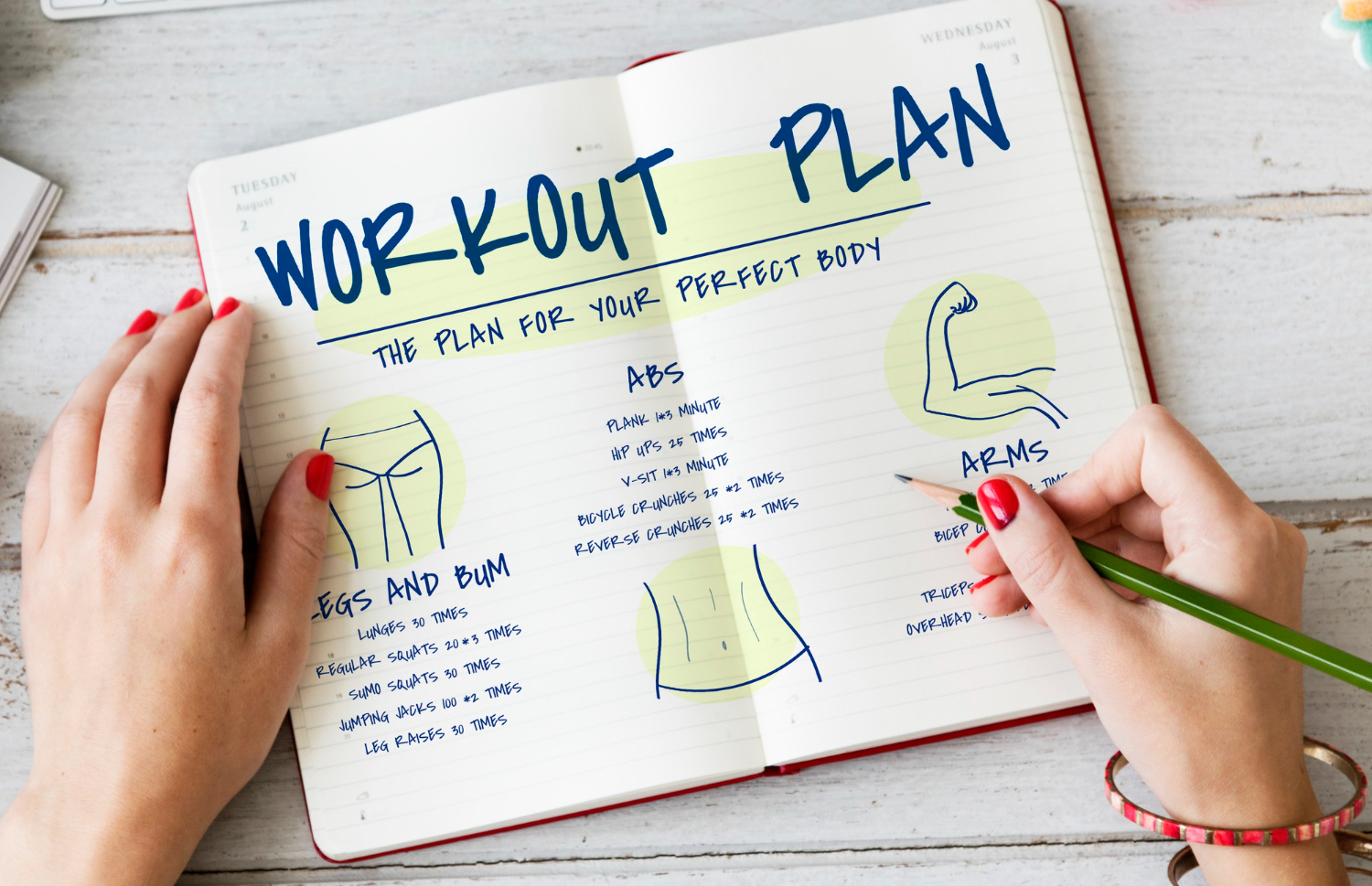
So, how often should you be working those quads? It’s a great question, and getting it right is key to making progress without overdoing it.
Aim for 2-3 Times a Week: For most people, working the quads two to three times a week is ideal. This frequency allows you to challenge your muscles while giving them enough time to recover and grow stronger.
Listen to Your Body: Pay attention to how your legs feel. If you’re still sore from your last quad workout, give yourself an extra day of rest. Recovery is just as important as the workout itself.
Mix It Up: Alternate between different quad exercises to keep things interesting and to target your muscles from different angles. This approach helps prevent overuse injuries and keeps your workouts fresh.
Balance Is Key: Don’t forget the rest of your legs. While focusing on quads, make sure you’re also working on your hamstrings, glutes, and calves. A balanced leg routine supports overall leg health and strength.
Consider Your Goals: If you’re training for a specific event or sport, you might need a different approach. In that case, it’s best to tailor your routine to your personal goals and consult with a fitness professional.
Remember, consistency is what matters most. Stick to your routine, listen to your body, and you’ll see those quads getting stronger and more sculpted over time. Let’s get ready to crush those workouts!
Preparation and Guideline For The Quads Exercise:
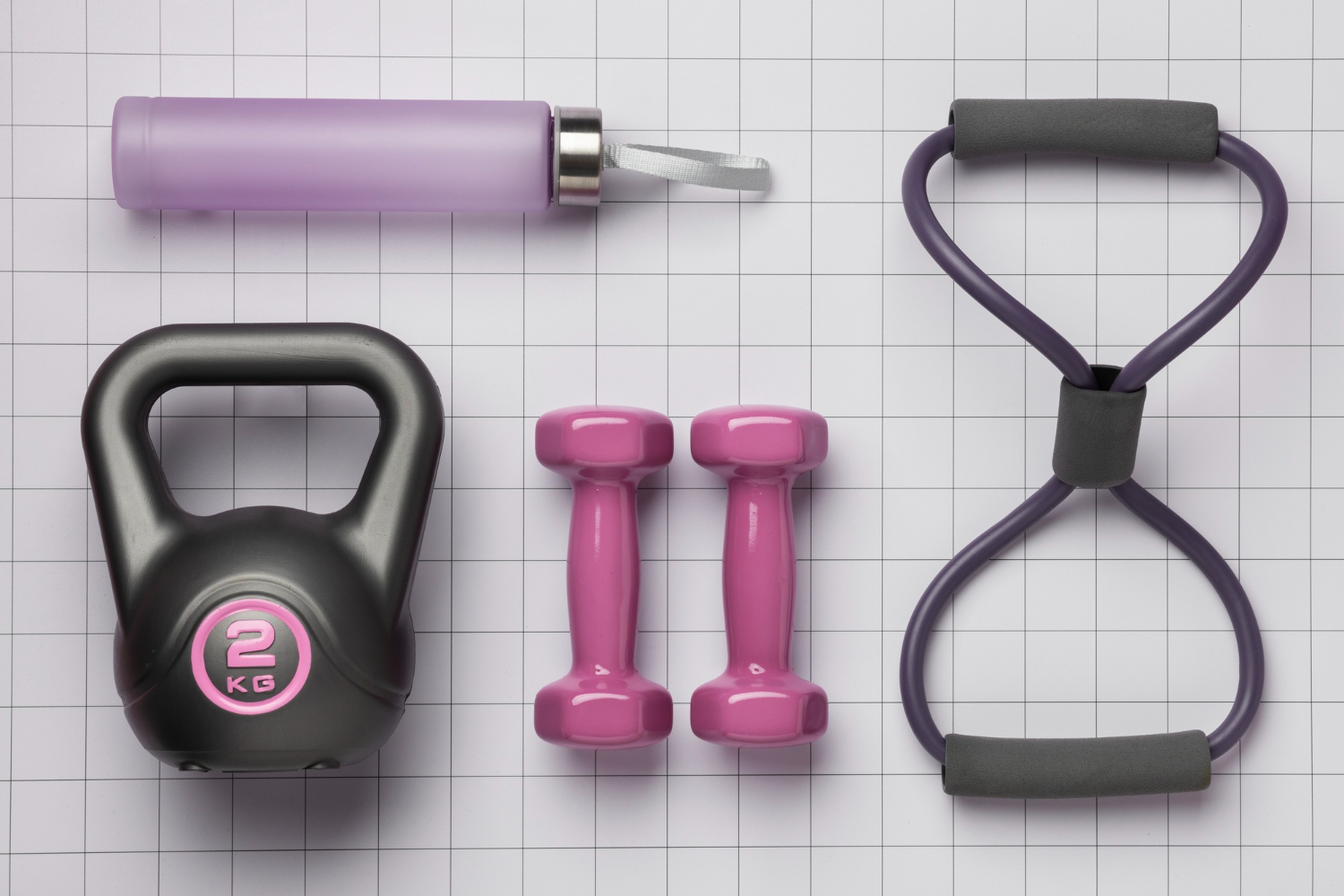
Required Time: A good quad workout takes about 30-45 minutes, including warm-up and cool-down. If short on time, focus on key exercises with proper form.
Equipment: You can use bodyweight for squats and lunges. Adding dumbbells, kettlebells, resistance bands, a leg press machine, or a barbell can enhance your workout, but they’re not essential. Even minimal equipment can yield great results with consistency and good technique. Ready to get those quads working? Let’s go!
Best Quad Exercises for Increasing Leg Strength & Muscle Mass
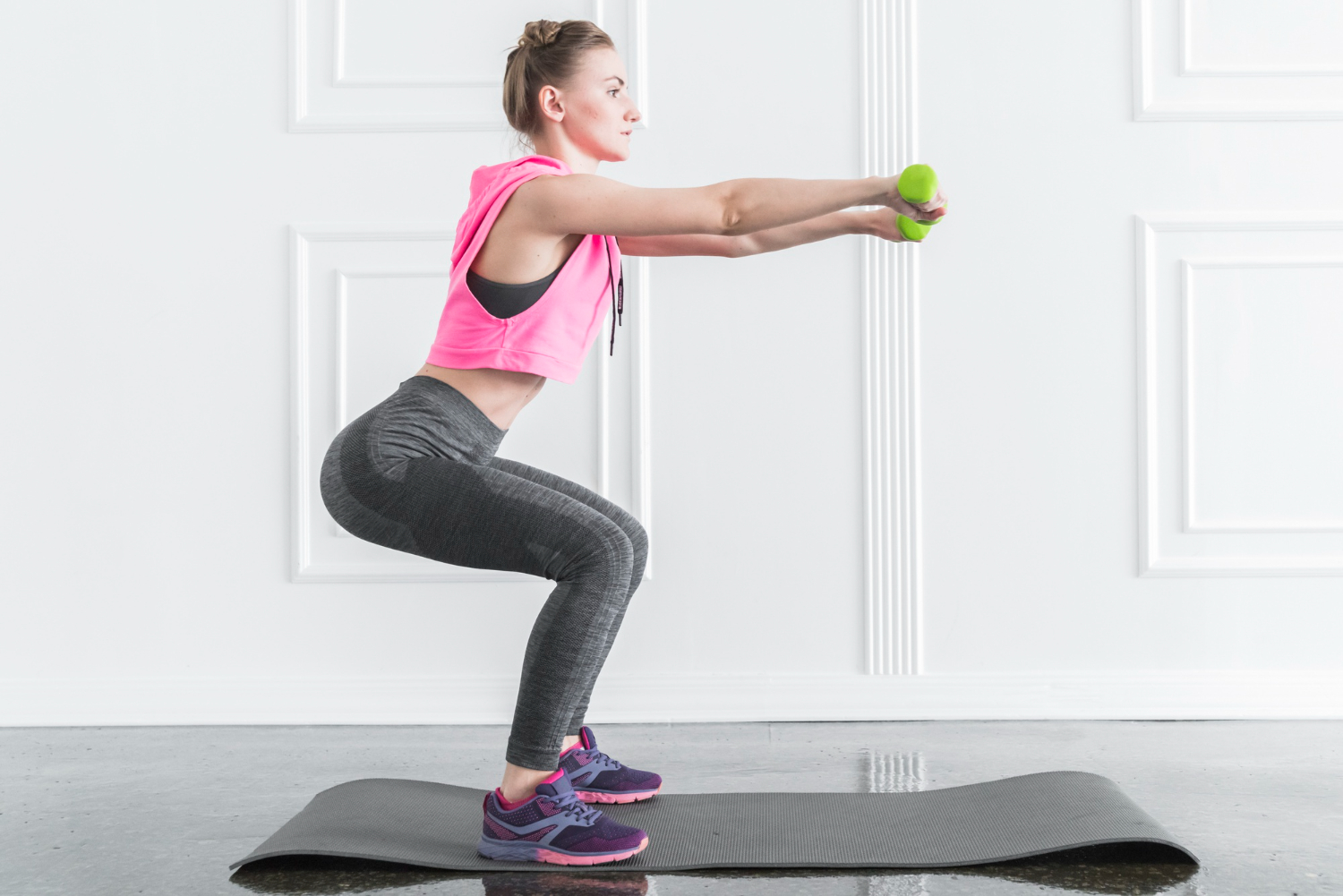
1. Regular Squat With Dumbbell:
Why Squats Are Effective: Squats are one of the best exercises for targeting your quads. They engage multiple muscle groups, helping you build strength, improve balance, and increase overall lower body power. Plus, they’re great for burning calories and enhancing functional fitness.
Reps and Sets: Aim for 3 sets of 12-15 reps. Adjust the weight as needed to ensure you’re challenging your muscles but maintaining good form.
How to Do Dumbbell Squats:
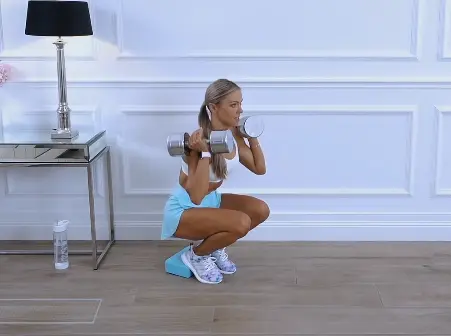
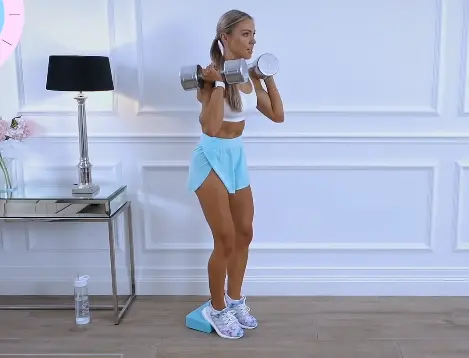
- Starting Position: Stand with your feet shoulder-width apart, toes slightly turned out. Hold a dumbbell in each hand at your sides, or place a barbell across your shoulders if using weights.
- Lowering Phase: Engage your core and keep your chest up. Push your hips back and bend your knees to lower your body as if sitting in a chair. Make sure your knees stay in line with your toes.
- Bottom Position: Lower down until your thighs are parallel to the ground or as low as your flexibility allows. Your knees should not extend past your toes, and your weight should be on your heels.
- Rising Phase: Press through your heels to return to the starting position, straightening your legs and squeezing your glutes at the top.
2. Forward Lunge:
Why Lunges Are Effective: Lunges are fantastic for targeting the quads while also engaging the glutes, hamstrings, and core. They help improve balance, coordination, and unilateral strength (working one leg at a time), which can correct muscle imbalances and enhance overall leg stability.
Reps and Sets: Aim for 3 sets of 10-12 reps per leg. Adjust the weight as needed to maintain a challenge while keeping good form.
How to Do Lunges:
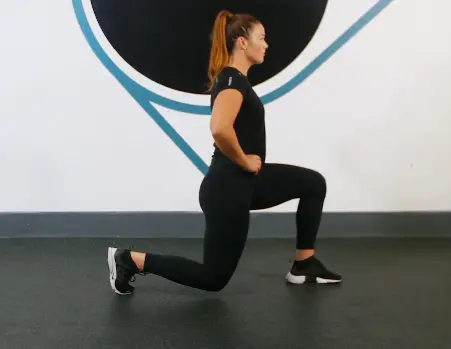
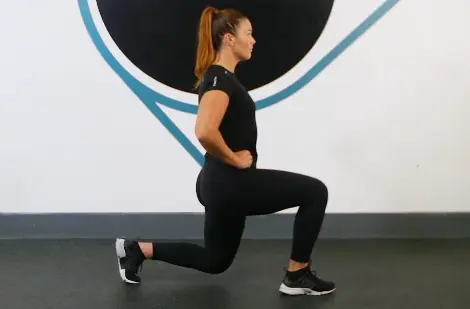
- Starting Position: Stand tall with your feet hip-width apart. Place your hands on your hips or hold a dumbbell in each hand at your sides for added resistance.
- Stepping Forward: Take a big step forward with your right foot. Keep your torso upright and engage your core.
- Lowering Phase: Lower your body until your front thigh is parallel to the ground and your back knee almost touches the floor. Your front knee should be directly above your ankle, and your back knee should hover just above the ground.
- Rising Phase: Press through your front heel to push back up to the starting position. Bring your right foot back to meet your left.
- Repeat: Perform the lunge with your left leg. This completes one rep.
3. Step Up
Why Step-Ups Are Effective: Step-ups are great for targeting your quads and also work your glutes and hamstrings. They mimic everyday movements like climbing stairs, making them functional and practical. Plus, they improve balance and coordination.
Reps and Sets: Aim for 3 sets of 12-15 reps per leg. Adjust the height of the bench or the weight of the dumbbells to match your fitness level and ensure a good challenge.
How to Do Step-Ups:

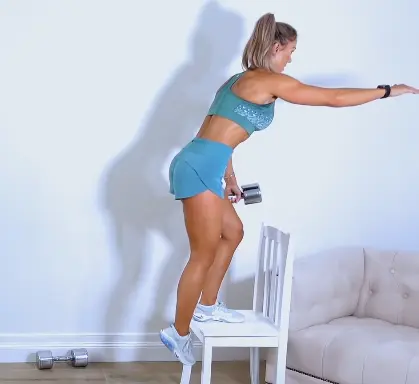
- Starting Position: Stand in front of a sturdy bench or step. Hold a dumbbell in each hand at your sides if you want to add resistance.
- Stepping Up: Place your right foot firmly on the bench. Make sure your whole foot is on the surface to maintain balance.
- Lifting Phase: Press through your right heel to lift your body up onto the bench, bringing your left foot up to meet your right. Stand tall at the top.
- Stepping Down: Step back down with your left foot first, followed by your right foot, returning to the starting position.
- Repeat: Perform the step-up with your left leg leading.
4. Split Squat:
Why Split Squats Are Effective: Split squats are excellent for isolating the quads while also engaging the glutes and hamstrings. They improve balance, stability, and unilateral strength, helping to correct muscle imbalances. This exercise also enhances hip flexibility and mobility.
Reps and Sets: Aim for 3 sets of 10-12 reps per leg. Adjust the weight of the dumbbells to maintain a challenge while ensuring proper form.
How to Do Split Squats:
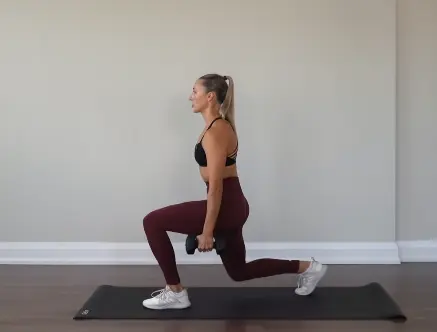
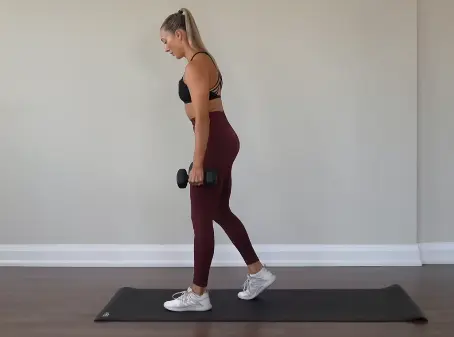
- Starting Position: Stand tall with your feet hip-width apart. Take a step back with your left foot, placing it behind you. Your right foot should stay forward. Hold a dumbbell in each hand at your sides for added resistance.
- Lowering Phase: Keeping your torso upright, bend both knees to lower your body. Your back knee should hover just above the ground, and your front thigh should be parallel to the floor. Ensure your front knee is aligned over your ankle.
- Rising Phase: Press through your front heel to rise back up to the starting position, straightening both legs.
- Repeat: Complete all reps on one leg before switching to the other.
5. Bulgarian Split Squat
Why Bulgarian Split Squats Are Effective: This variation of the split squat places more emphasis on the quads while still engaging the glutes, hamstrings, and core. It challenges balance and stability, promoting functional strength and coordination.
Reps and Sets: Aim for 3 sets of 10-12 reps per leg. Adjust the weight of the dumbbells as needed to maintain proper form and intensity.
How to Do Bulgarian Split Squats:
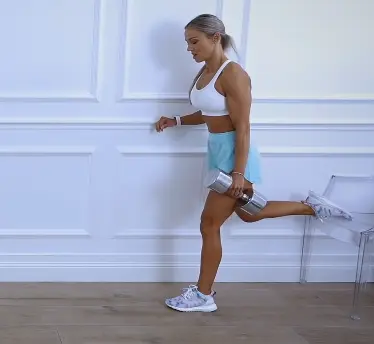
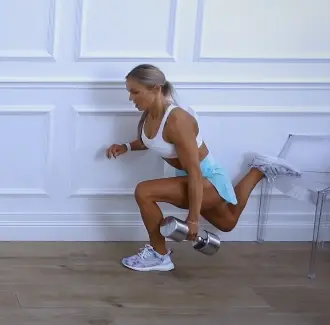
- Starting Position: Stand facing away from a bench or raised platform. Place the top of your right foot on the bench behind you, and step your left foot forward a few feet. Hold a dumbbell in each hand at your sides for added resistance.
- Lowering Phase: Keeping your torso upright, bend your left knee to lower your body straight down towards the ground. Your right knee should hover just above the floor, forming a 90-degree angle with your left knee.
- Rising Phase: Press through your left heel to return to the starting position, straightening your left leg.
- Repeat: Complete all reps on one leg before switching to the other.
6. Goblet Squat
Why Goblet Squats Are Effective: Goblet squats are a versatile and effective quad exercise that can be done anywhere with minimal equipment. Holding a weight in front of your chest helps maintain an upright posture, ensuring proper form and maximizing muscle engagement.
Reps and Sets: Aim for 3 sets of 12-15 reps. Adjust the weight of the dumbbell or kettlebell to suit your strength level and maintain proper form throughout the exercise.
How to Do Goblet Squats:
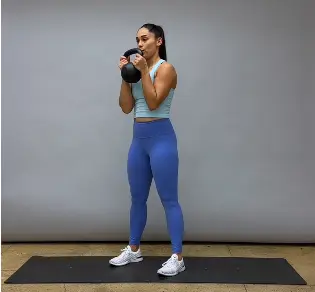
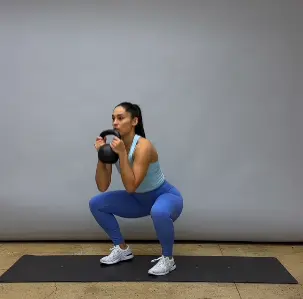
- Starting Position: Stand with your feet shoulder-width apart, toes slightly turned out. Hold a dumbbell or kettlebell vertically at chest level, close to your body.
- Lowering Phase: Brace your core and keep your chest up as you squat down, pushing your hips back and bending your knees. Lower your body until your thighs are parallel to the ground, or as low as your flexibility allows.
- Bottom Position: Ensure your knees track over your toes and your weight is evenly distributed through your heels. Keep your chest lifted and your back straight.
- Rising Phase: Press through your heels to return to the starting position, squeezing your glutes at the top.
- Repeat: Perform the squat for the desired number of reps.
7. Curtsy Lunge
Why Curtsy Lunges Are Effective:Curtsy lunges target the quads, glutes, and inner thighs, helping to sculpt and strengthen these areas. They also improve hip mobility and balance, making them a functional exercise for everyday movements.
Reps and Sets: Aim for 3 sets of 10-12 reps per leg. Adjust the difficulty by holding dumbbells or increasing the depth of the lunge.
How to Do Curtsy Lunges:

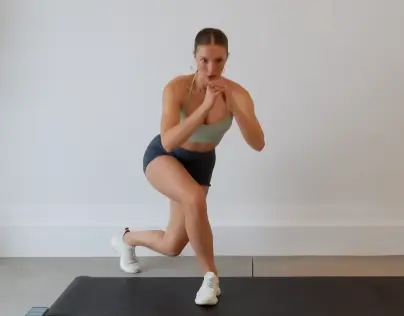
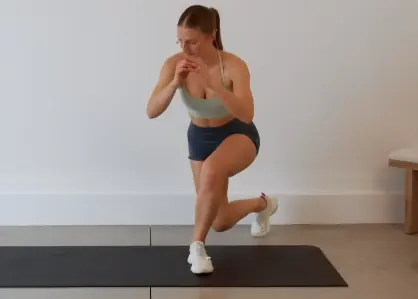
- Starting Position: Stand with your feet hip-width apart and hands on your hips or holding dumbbells at your sides for added resistance.
- Crossing Behind: Step your right foot diagonally behind your left leg, as if curtsying. Keep your torso upright and your chest lifted.
- Lowering Phase: Bend both knees to lower your body straight down towards the ground. Your left knee should track over your left ankle, and your right knee should hover just above the floor.
- Rising Phase: Press through your left heel to return to the starting position, squeezing your glutes at the top.
Repeat: Perform the curtsy lunge on one side before switching to the other.
Final Words:
By incorporating these exercises into your routine and following proper form and technique, you can achieve stronger, more defined quads and overall lower body strength. So, lace up your sneakers, grab some weights if you like, and let’s get those quads working!
